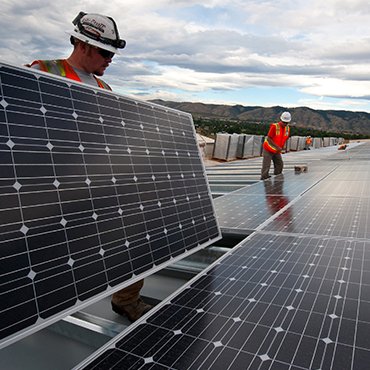
The Evolution of Solar Technology | Historic Innovation of Solar Cells
Solar energy is used as a sustainable power solution and is getting hype all around the world. The evolution of solar technology consists of a series of events that led it to receive this much popularity. Going down the history we see that the first application of solar energy was the amplification of sun rays to get heat. The Greeks and Romans used to do this experiment for burning mirrors for lighting up torches concerning their religious activities in the third century B.C. Since then solar technology has evolved to a significant extent.
Read this full blog to learn about the evolution of solar technology.
The Invention of Solar Panels
The invention of the photovoltaic effect by Alexandre Becquerel in 1839 proved to be a major milestone in the evolution of solar panel technology. Later in 1888, Aleksandr Stoletov created the first solar cell. Solar cells were sold commercially for the first time in 1955. 10% more efficient solar cells were made by Hoffman Electrics. In 1970 the Solar Power Corporation made efforts to increase the efficiency of solar panels.
This is how solar technology was revolutionized step by step. In the present era, solar energy is taken as one of the most cost-effective solutions. Besides, it is expected that solar power will witness massive growth in the renewable energy sector in the coming ten years.
Solar Energy in the Present Day
The Solar Energy Industries Association has reported that solar has grown at 50% of the average annual rate for a decade in the United States. The public and private sectors are observed to be switching to solar technology more and more. The constraints seen in PV panels are believed to be overcome by the next generation. In this way, the future of solar will be even brighter along with witnessing a massive achievement in the way forward to the evolution of solar technology.
Highlighting the Significance of Solar Cells
The most integral part of solar technology is a solar panel. Without a solar panel, the evolution of solar technology would be incomplete. To discuss particularly, solar panels consist of solar cells that produce electricity by undergoing a natural reaction. This process is given the name of the photovoltaic effect.
From above we can clearly say that solar cells are the building blocks of solar panels. To make a comparison among different types of cells we have taken three types. Each of these is highlighted in detail to get a thorough insight into the working and the benefits associated.
▪Mono Perc Technology
Mono perc cells are 2% to 2.5% more efficient than poly ones. The Perc is an innovative term that is made available in the form of mono and poly. In this way, more efficiency is generated. Some of the benefits of Mono Perc Cells are listed below:
- They can combine low-light and high-temperature performance allowing more flexible mounting and installation of the panels.
- Mono Perc cells provide more tilt and placement options to the clients without compromising efficiency.
- This technology is suitable mostly for restricted areas such as residential consumers
- Lower payback periods due to lower-levelized energy
▪TOPCon
The TOPCon solar cells are made unique in comparison to other cells. This is because of their capability of producing more electricity from the same amount of sunlight and thus are suitable to use in large solar plants.
The following points highlight the benefits of TOPCon solar cells.
- TOPCon cells have lower power degradation in comparison to Perc cells. Even after 30 years of use, it maintains its low power degradation power adding to the life of the solar module
- The manufacturing costs of a TOPCon cell are lesser as it uses the same machines that used in the manufacturing of the P-type cells
- Such cells have a higher conversion efficiency rate due to their ability to convert sunlight more efficiently. This rate is higher than the maximum efficiency of a Perc cell
- The low-temperature coefficient of a TOPCon cell keeps with the efficiency even in hot and humid weather.
- The high spectral response makes the TOPCon cell generate more electricity at a wide range of solar spectrum even from blue and green areas. They are used ideally in cloudy areas to get solar power efficiently.
▪HJT (Heterojunction Technology)
A solar production method the Heterojunction Technology (HJT) has been getting hype nowadays days. This technology is taken as the most efficient for getting maximum power outputs. It is composed of three layers made up of photovoltaic materials. Crystalline silicon and amorphous “thin-film” silicon combine to form the structure of HTJ cells. The top layer made of amorphous silicon absorbs sunlight before going through the net one. The middle layer is responsible for turning most of the sunlight into electricity. Another layer of amorphous thin-film silicon is there behind the crystalline silicon. This final layer captures the remaining photons that surpass the first two layers.
Benefits of Heterojunction Technology (HJT):
- The amorphous silicon technology is a cost-effective photovoltaic technology
- HJT has more efficiency rates than other conventional monocrystalline cells.
- On average, thin-film photovoltaic modules have a life expectancy of up to 25 years, while HJT solar cells can remain fully functioning well over 30 years.
Conclusion:
Selecting the right type of solar cell will add to the success and life of the solar panels. Whenever you are selecting the cell type for solar installation do consider the specifications of each solar cell type. This will also help gain long-lasting and reliable client relationships.

